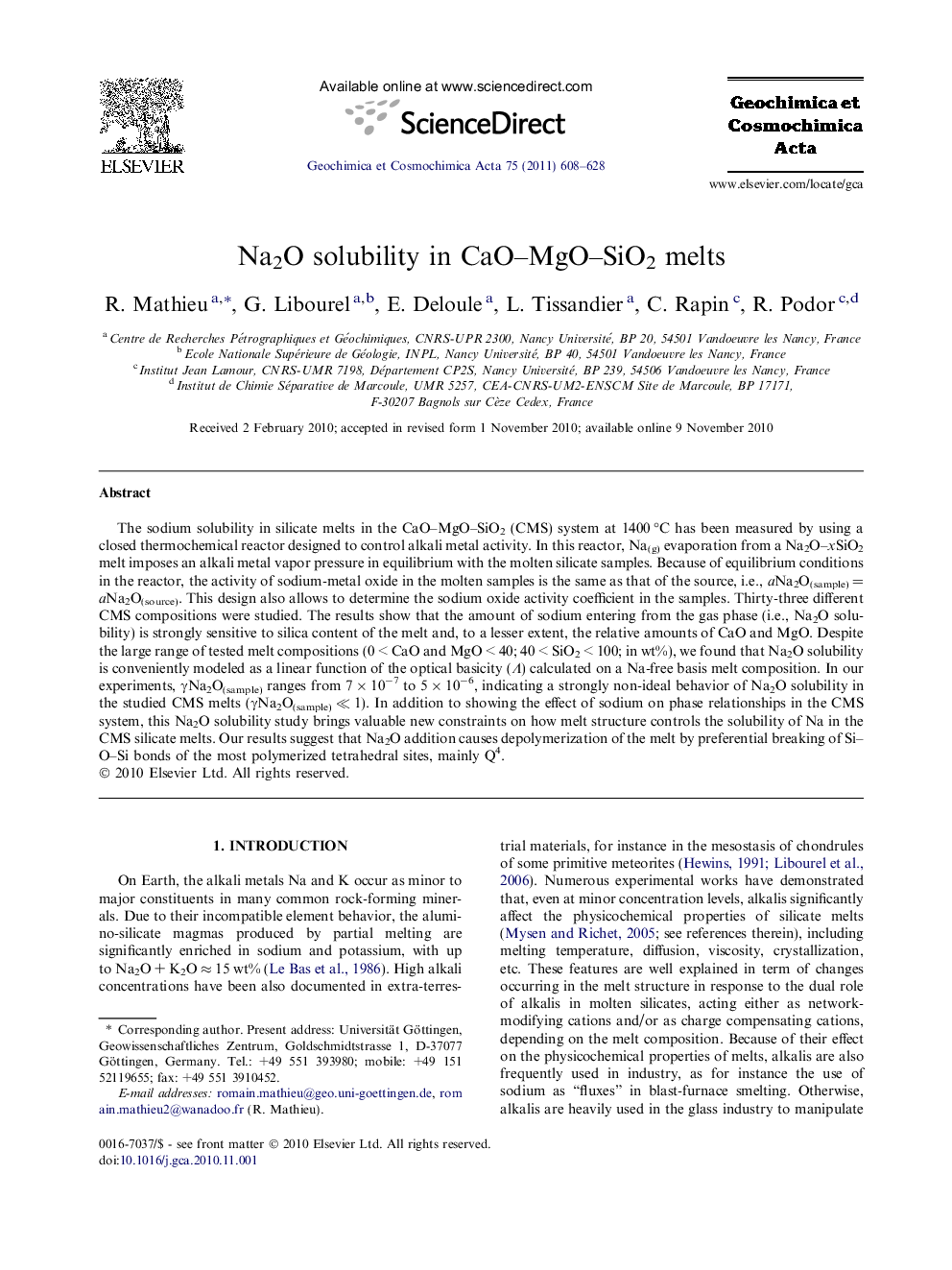| Article ID | Journal | Published Year | Pages | File Type |
|---|---|---|---|---|
| 4703635 | Geochimica et Cosmochimica Acta | 2011 | 21 Pages |
The sodium solubility in silicate melts in the CaO–MgO–SiO2 (CMS) system at 1400 °C has been measured by using a closed thermochemical reactor designed to control alkali metal activity. In this reactor, Na(g) evaporation from a Na2O–xSiO2 melt imposes an alkali metal vapor pressure in equilibrium with the molten silicate samples. Because of equilibrium conditions in the reactor, the activity of sodium-metal oxide in the molten samples is the same as that of the source, i.e., aNa2O(sample) = aNa2O(source). This design also allows to determine the sodium oxide activity coefficient in the samples. Thirty-three different CMS compositions were studied. The results show that the amount of sodium entering from the gas phase (i.e., Na2O solubility) is strongly sensitive to silica content of the melt and, to a lesser extent, the relative amounts of CaO and MgO. Despite the large range of tested melt compositions (0 < CaO and MgO < 40; 40 < SiO2 < 100; in wt%), we found that Na2O solubility is conveniently modeled as a linear function of the optical basicity (Λ) calculated on a Na-free basis melt composition. In our experiments, γNa2O(sample) ranges from 7 × 10−7 to 5 × 10−6, indicating a strongly non-ideal behavior of Na2O solubility in the studied CMS melts (γNa2O(sample) ≪ 1). In addition to showing the effect of sodium on phase relationships in the CMS system, this Na2O solubility study brings valuable new constraints on how melt structure controls the solubility of Na in the CMS silicate melts. Our results suggest that Na2O addition causes depolymerization of the melt by preferential breaking of Si–O–Si bonds of the most polymerized tetrahedral sites, mainly Q4.
